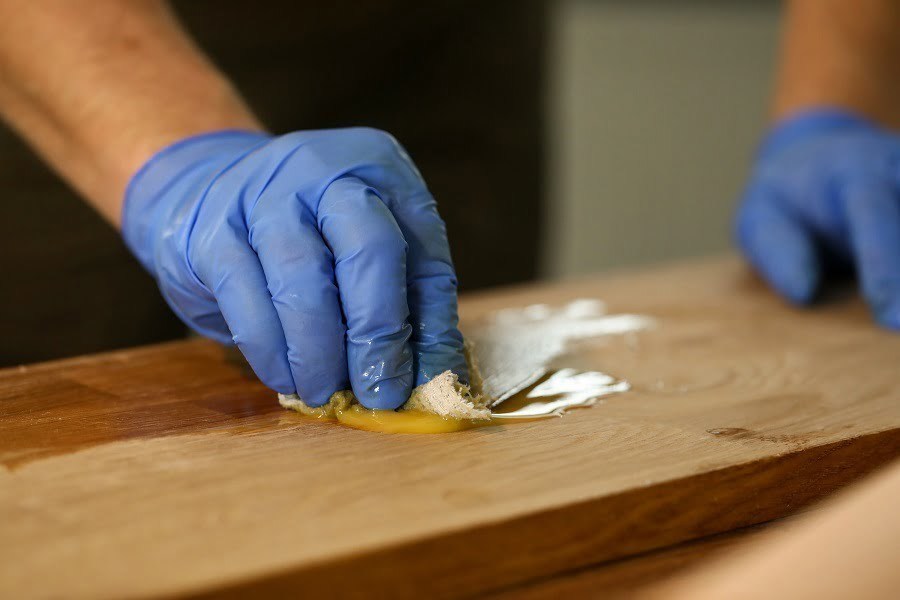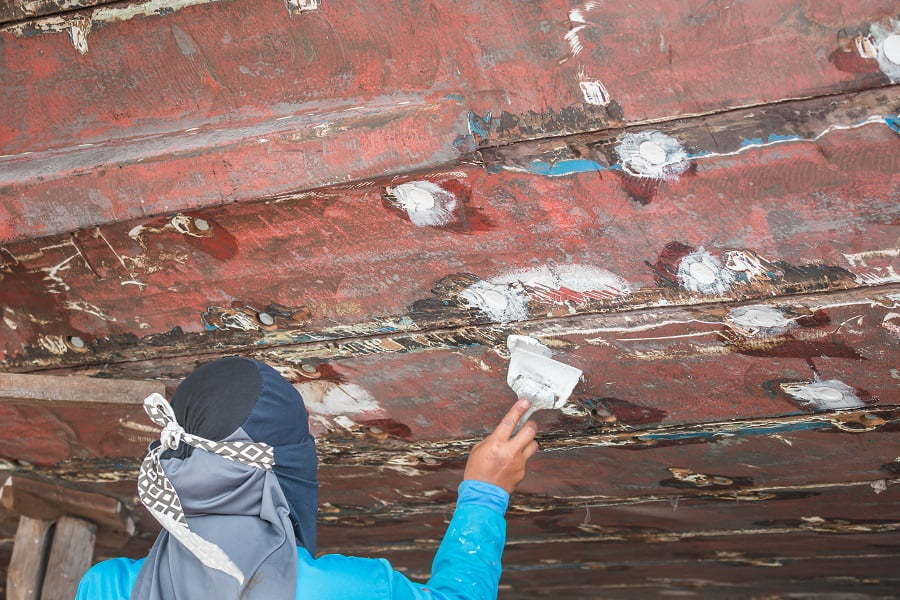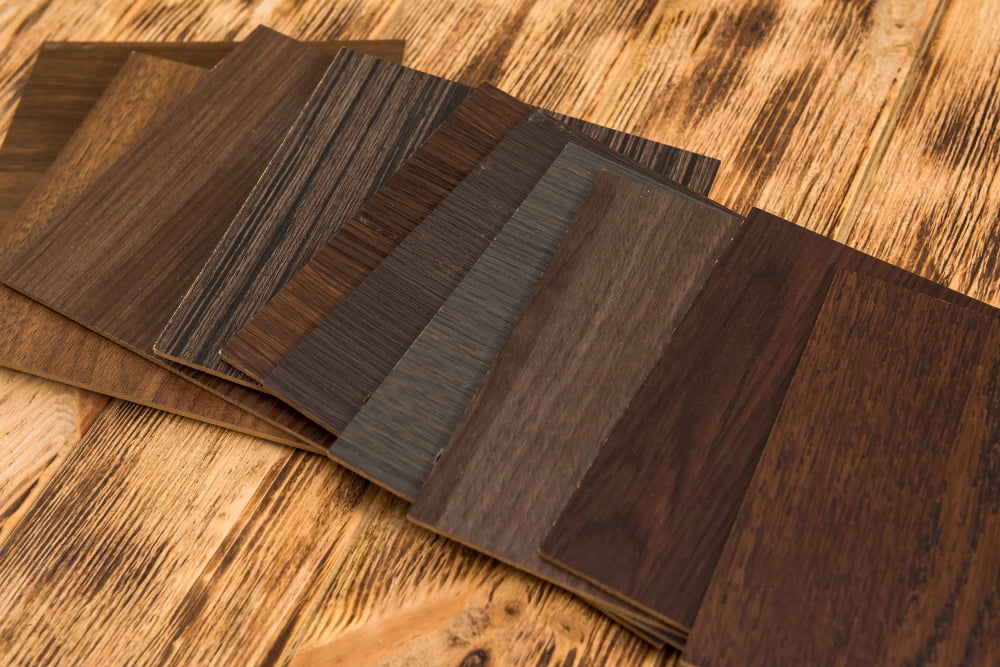Last updated on
Want your wood crafts and wooden furniture to last longer? You can harden it by treating it with a wood hardener. Here’s how.
Wooden products change and deform depending on temperature and humidity. If you want to reduce the risk of such changes, you can give the wood extra strength through chemical treatment. This will add weight and color to the wood. There are dozens of different ways to harden the wood, which we will consider the most common.
Harden Wood with Wood Hardener

Hardening rotten wood with the wood hardener is an effective solution if you want to strengthen it when it starts to deteriorate. It is highly recommended to restoring strength to a material damaged by moisture, mold, or insects. It penetrates deeply into the fibrous structure of wood.
This hardener for wood permanently stops the crumbling of damaged, for example, worm-eaten or rotten feet of old furniture. It stops the deterioration of the material before it is too late.
In addition, this rotten wood hardener prevents moisture from entering the wood. It protects new or old wood against water attacks. It is easily compatible with all types of finishing products such as waxes, oils, saturators, stains, varnishes, paints.
Preparation Before Hardening Wood With Wood Hardener

Prepare Rotten Wood
Preparing rotten wood before hardening with the wood hardener is an operation that should not be taken lightly. You cannot treat a surface that is not sufficiently clean beforehand.
Eliminate Rotten Wood
It is recommended to gently brush the affected area. It is necessary to put the damaged material back bare in order to reach the sound structure. It is better to remove a little too much deteriorated wood than not enough. The process may continue after treatment if the rot is not properly controlled.
Degrease Surface
If the surface is too dirty, it must be cleaned properly with an industrial degreaser to make it sufficiently clean. It will allow the treatment to take root much better in the structure thereafter. Do not forget to rinse well to get rid of all product residue, dust or dirt.
Treat Cracks
The cracks, holes or gaps that appear after surface preparation must be treated beforehand. It is advisable to use a wood paste which must follow the movements of the support without crumbling. It is easily moldable by hand. It becomes very hard and very dense after complete drying.
Harden Wood With Wood Hardener
Hardening rotten wood with the wood hardener does not pose any particular problem. It suffices to impregnate the pores of the wood in-depth in order to strengthen its fibrous structure.
Fill The Wood
It is applied in the holes in the wood using a suitable pipette. It is necessary to fill the galleries of insects, as well as the attacked parts until complete saturation. Above all, do not hesitate to repeat the filling several times in a row in order to sufficiently strengthen the structure of the wood.
Apply the Hardener
It is recommended to impregnate the wood by brushing it with a varnish thumb brush. The entire surface must be covered until the wood is completely saturated. After the hardener dries, a light sanding is necessary in order to remove the surface haze which may appear in the event of excess product.
Cover With a Finish
When the wood has regained all its hardness, it is possible to protect it effectively. Simply allow the hardener to dry for a minimum of 24 hours before applying the desired finish. The surface can thus be tinted, waxed or varnished normally like natural wood.
Beside this, you can also harden your wood with salted dough and fire. Let’s see what is it and how to do it.
Salted Dough Method
This method is suitable for those who want to use natural ingredients instead of aggressive chemicals.
- Dry the wood immediately. At high humidity, use a dryer to avoid excess moisture in the heated wood. Do not forget that if the wood is excessively heated, it can be subdued.
- Mix 350g of table salt and 1 litre of water to make the dough. Stir well. Allow infusing for a few hours.
- Add cornstarch in cups until you have a paste-like consistency. Your dough should be like a muffin dough.
- Separate the three egg yolks from the proteins. Add the proteins to the solution to reduce the peeling.
- Organize support that will put the wooden product in an upright position.
- Apply a thick layer of dough on both sides of the part. And leave them for a week.
Fire-Hardening Wood Method
Fire curing was done by our earliest ancestors 500,000 years ago. They burned their spearheads in flames and were then easily able to use them for hunting as well as the metal point they invented.
However, this curing method is only suitable for small objects that are not interested in turning beautiful wood tones into charred black. Larger woods should be treated differently.
Related reading:
Table of Contents





